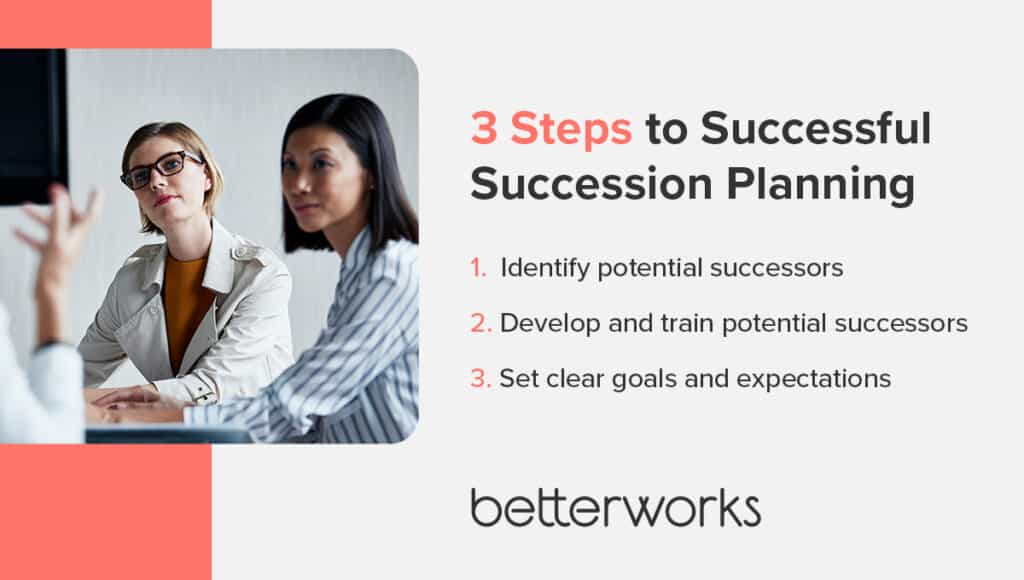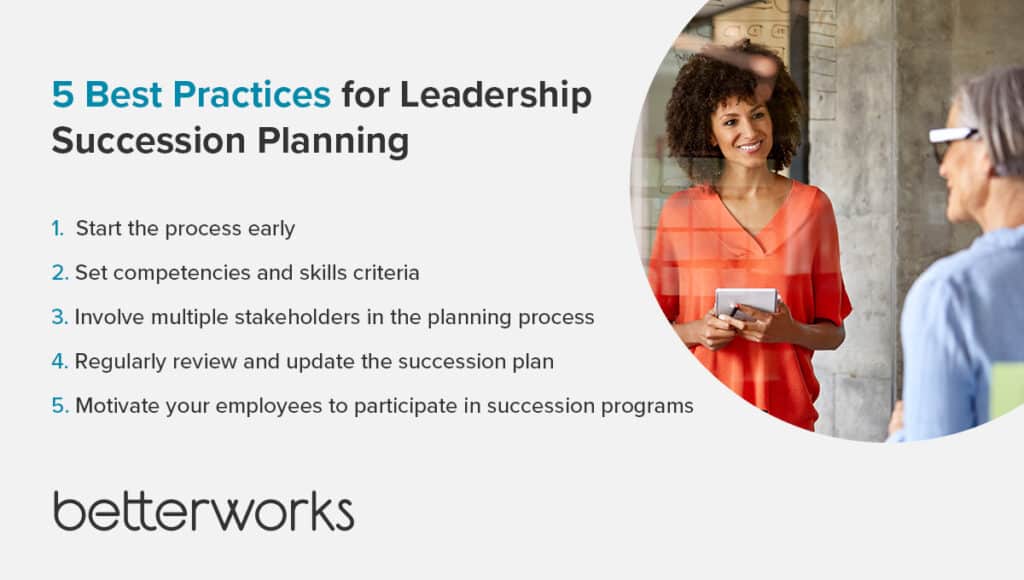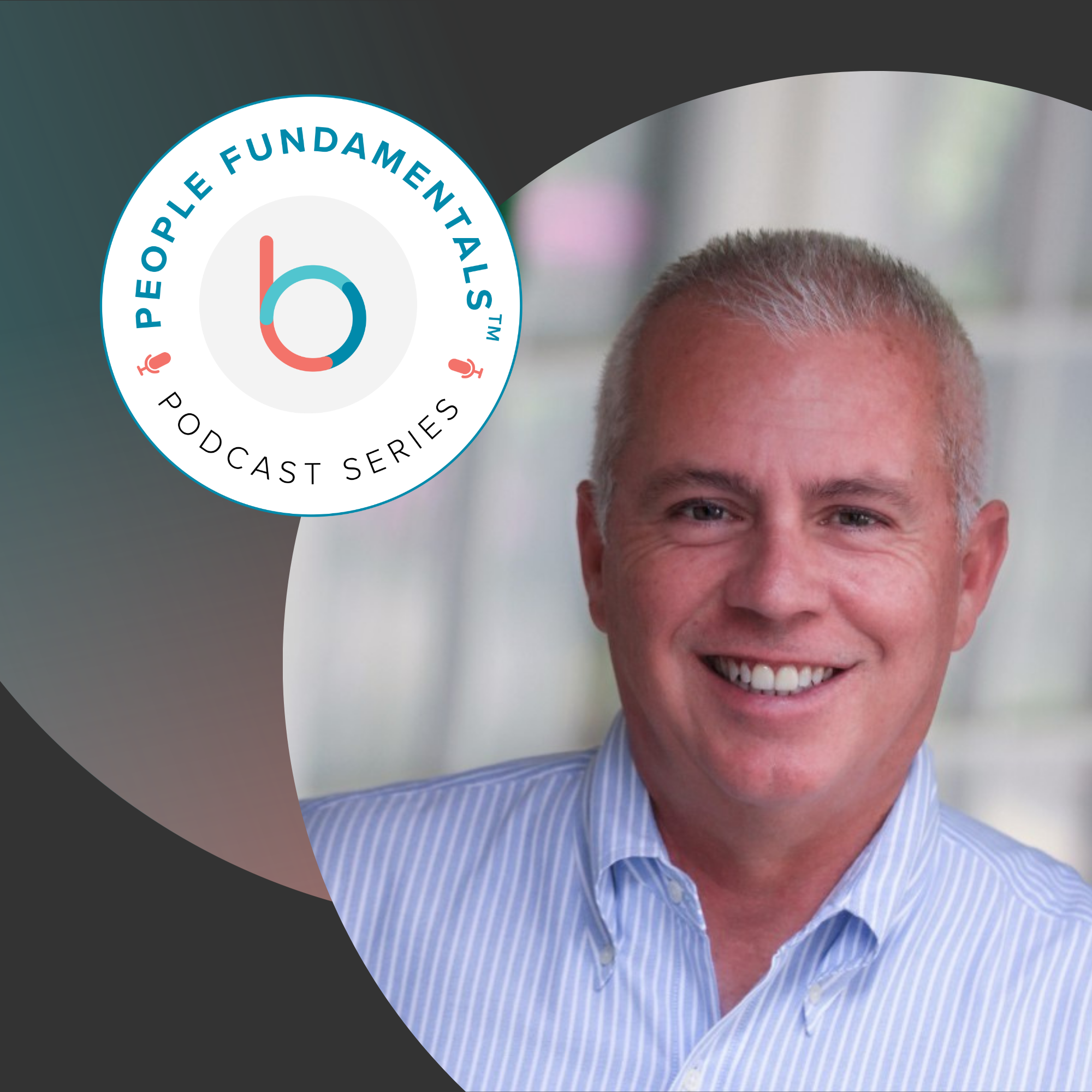- What is a leadership succession plan, and why does it matter?
- How does succession planning interact with other HR functions?
- 3 steps to effective succession planning and leadership development
- What role do current leaders play in succession planning management?
- 5 best practices for successful leadership succession planning
- Engineer your future with leadership succession planning
A leadership succession plan is an insurance policy for your organization’s future. As HR leaders, you play a critical role in leadership succession planning and in bringing that plan to life.
Your entire organization is at risk when you lose key leaders without having a plan to replace them. And yet, more than half of HR professionals surveyed by the Society for Human Resource Management in August 2021 said their organization didn’t have a succession plan in place.
Find out why leadership succession planning is important, and learn about best practices for developing an effective succession plan for your workforce.
What is a leadership succession plan, and why does it matter?
In the absence of effective leadership, organizations fall into disorder. But people — even those in top leadership roles — leave organizations all the time. You need a plan to transition one leader out and a new leader in without too much disruption to daily operations.
Your leadership succession plan should identify key positions and the individuals who are best suited to fill them. It should outline clear steps for preparing those developing leaders to take on increased responsibilities.
Succession planning is important because it reduces the risks associated with leadership transitions, preserves continuity, and protects mission-critical information and objectives.
Prepare the next generation of leaders
Succession planning is an important process for guaranteeing that your organization has a pipeline of emerging leaders who can step into management and executive roles. A leadership succession plan prepares the next generation by providing them with opportunities to shadow today’s leaders and learn from their experiences.
This process starts well before a job is about to open up. Your organization should be identifying high-potential employees early in their careers and tailoring their development plans to prepare them for their future roles.
Leadership succession planning further ensures smooth transitions by preparing multiple individuals for each leadership role, in response to multiple succession scenarios.
Maintain the organization’s continuity and culture
A leadership succession plan maintains continuity by creating a pool of upcoming leaders who are familiar with the organization’s priorities, culture, and values.
By shadowing today’s leaders, developing leaders can learn how to react in a crisis, for example, or what to prioritize when making crucial decisions. Up-and-coming leaders can learn from what they observe, and they can connect the actions taken to the organization’s priorities.
Because a leadership succession plan aligns future leaders with the organization’s values and practices, you’ll also create cultural continuity by developing and promoting from within.
How does succession planning interact with other HR functions?
While succession planning is a cross-functional process, HR heavily influences it. Explore your role in executing these three succession planning priorities.
Talent management and succession planning
To establish a strong succession plan, an organization needs a solid talent management system. Succession efforts should integrate with your talent systems so that any activity around potential successors gets tracked and combined with other key workforce data.
As part of your standard talent development process, you should be identifying the different skills and strengths people bring to your workforce. This information helps you pinpoint people with the highest leadership potential for your organization.
Identifying potential leaders has a big influence on your larger talent outcomes. A well-run succession planning program helps organizations retain talent, reduces recruitment costs, and avoids the “brain drain” that can occur when key employees leave.
Knowledge management and succession planning
Knowledge loss due to leadership departures can have catastrophic effects on your organization. That’s why knowledge management is an essential component of an effective succession plan.
A company must develop processes for transferring knowledge between existing and future leaders. But first, it’s important to have a system in place to track and manage employee knowledge.
Your tracking system can include documentation processes, formal training, mentorship programs, or simply encouraging knowledge-sharing among employees. Collaborate with your learning and development leaders to design intentional processes for collecting and sharing important institutional information.
Business management and succession planning
Succession planning can help businesses avoid the “key person” problem, where critical functions rely on one person. When that person leaves, the organization’s daily functions — and business outcomes — are put at risk.
Succession planning and business management should go hand in hand. You must account for tactical, operational, and strategic priorities that could be affected by a leadership transition. Work with the rest of the business leadership team to run succession scenarios and proactively identify gaps in readiness.
3 steps to effective succession planning and leadership development
Follow these three basic steps to kick-start succession planning processes inside your organization.
Identify potential successors
The first step to succession planning is identifying who has the potential to take over leadership roles in the future. There are many methods to help you determine future leaders, including skills assessments, performance reviews, and 360-degree feedback.
Start by assessing current leaders to identify the specific qualities you need in a successful leader. You might have historical data to guide you, but don’t solely rely on the past. We live and work in a dynamic environment, and what you needed from leaders yesterday might be significantly different from what you need tomorrow.
Next, examine your overall bench strength, which can also be described as your workforce’s capability for leadership. From there, identify specific people with the highest leadership qualities and match them to potential roles within the organization.
Develop and train potential successors
Once you have a list of potential successors, create a customized development plan for each one. Make sure you’ve identified the strengths and weaknesses of each potential successor, with plans to address weaknesses and build on strengths. The plan should be challenging but realistic, achievable, and time-bound.
It should include relevant training and development activities that prepare each candidate to take over a specific leadership role. There are several ways to do this, including job shadowing, mentorship, and training programs. You might already have many of these offerings in place.
Set clear goals and expectations
It’s also important to build clear goals and expectations into each potential successor’s performance plans. One of their objectives and key results (OKRs) could include a stretch goal to master one of the leadership skills you’ve identified. This type of OKR helps potential successors gain a better understanding of how they’ll need to prepare for the role.
Hold leadership candidates accountable for meeting their goals and expectations. Their direct manager is responsible for having ongoing, regular performance enablement conversations. Successor candidates can also benefit from a mentor’s guidance or interactions with people currently in the role.
Track the progress of each potential successor, and make adjustments to the plan as needed.

What role do current leaders play in succession planning management?
Current business leaders must involve themselves in leadership succession activities if they want to succeed. Explore these three important ways to bring today’s leaders into the process.
Setting the stage for a successful transition
As with any business initiative, the tone from the top matters. Encourage current leaders to emphasize the importance of succession planning and buy-in to leadership development activities.
Leaders possess valuable information about business operations that can affect the success of your succession planning program. Help those leaders share that knowledge in focused ways. For example, create a task force or committee of leaders to develop criteria for what characteristics or skills are needed in a successor.
Mentoring and grooming potential successors
Relationships between outgoing and incoming leaders provide a valuable channel for communicating important information. These relationships can be informal or more structured, such as job shadowing or mentorship.
Mentorships are a valuable way to prepare potential successors to take on leadership responsibilities in a specific job role or title. Successor candidates can learn how the job role fits into the organization’s priorities and culture, as well as how to make decisions and manage resources. These mentorships also provide opportunities for questions about specific parts of the job or what the current leader has learned over the years.
Handing over responsibilities and decision-making power
An essential part of succession planning is the incumbent leader’s willingness to cede control and move on. The transition process can be difficult to adjust to. At all times, help the leader understand that part of the job is creating a smooth and successful changeover.
Help current leaders identify opportunities to delegate tasks and responsibilities to incoming leaders. Incorporate these activities into the leadership candidate’s training and development plan, and link them to OKRs so you can track progress during performance conversations.
5 best practices for successful leadership succession planning
Identifying, training, and developing the next generation of leaders is a complex process. Implement these five best practices to put “success” into succession planning.
Start the process early
The earlier you start the succession planning process, the more time you have to identify potential leaders and prepare them for their next roles. Identifying high-potential candidates in early-career roles, for example, gives them time to make lateral moves and gain broader exposure to relevant business operations.
Succession planning is a long-term process with some unpredictability, as you never know when you might need to fill a vacant role. You’re better off with a deep and regularly replenished pool of qualified candidates.
Set competencies and skills criteria
Define the core competencies for each leadership role. These should be based on the company’s strategy and the specific needs of the role. Identify which skills leaders need to support those competencies.
Once you have identified the key competencies and skills, you can set criteria for each one. For each competency and skill, you need to decide what proficiency level is required of leadership candidates. You’ll also need to decide how you’ll assess whether candidates meet those criteria.
Involve multiple stakeholders in the planning process
Succession planning isn’t just HR’s job. You need help from employees at all levels. Encourage executives and managers to help identify successors for key positions. More broadly, solicit their feedback on what they expect from an effective leader. Organizational leaders must buy into the idea of succession planning while providing the necessary resources for pinpointing and upskilling leadership candidates.
Because managers function as performance coaches, they bring critical insights to the selection process. Empower them to identify high-potential talent on their teams and refer those people to HR. Make sure your culture and communication encourage managers to commit to succession planning and leadership development rather than hoarding talent.
Regularly review and update the succession plan
Review your succession plan at least once annually. Review the number of leadership candidates in your pool against the number of critical roles you’ve identified. Evaluate the competencies and skills you’re developing in those candidates and assess whether those remain the correct and most relevant attributes your organization needs.
As you review your succession plan, watch out for changes in organizational structure, daily operations, or job roles that impact the types of future leaders you require.
Motivate your employees to participate in succession programs
Employees are a key ingredient to a successful succession plan. You’ll identify the next generation of leaders from among today’s employees, whether they’re long-tenured or just starting in an entry-level role.
Develop a communication plan to keep employees updated on the succession planning process and its status. Train managers to lead discussions about leadership opportunities. Not everyone with the potential for leadership wants to lead, but open communication about what leadership entails helps employees make informed career decisions.

Engineer your future with leadership succession planning
Leadership succession planning is a critical function of HR, whether you’re managing people in a small business or developing strategic talent management for an enterprise-level organization. Get started today with identifying possible leadership candidates and the skills and job roles you’ll need to maintain. Train those successor candidates to understand the ins and outs of the business so you empower your organization to thrive for years to come.
Want to learn more? Check out Business Resilience vs. Business Continuity: 5 Ways to Prepare Your Workforce to Pivot Quickly.






